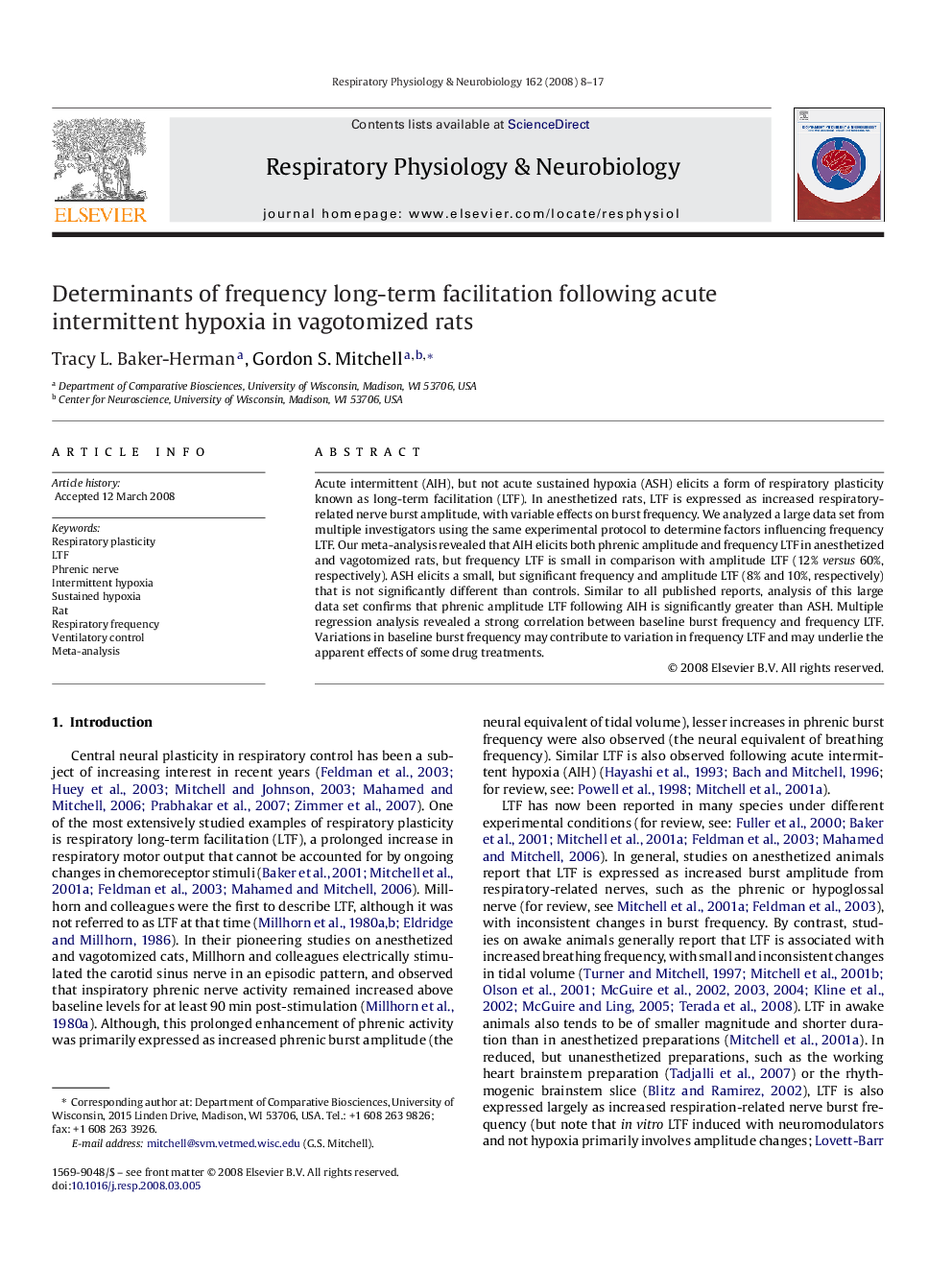| Article ID | Journal | Published Year | Pages | File Type |
|---|---|---|---|---|
| 2848095 | Respiratory Physiology & Neurobiology | 2008 | 10 Pages |
Acute intermittent (AIH), but not acute sustained hypoxia (ASH) elicits a form of respiratory plasticity known as long-term facilitation (LTF). In anesthetized rats, LTF is expressed as increased respiratory-related nerve burst amplitude, with variable effects on burst frequency. We analyzed a large data set from multiple investigators using the same experimental protocol to determine factors influencing frequency LTF. Our meta-analysis revealed that AIH elicits both phrenic amplitude and frequency LTF in anesthetized and vagotomized rats, but frequency LTF is small in comparison with amplitude LTF (12% versus 60%, respectively). ASH elicits a small, but significant frequency and amplitude LTF (8% and 10%, respectively) that is not significantly different than controls. Similar to all published reports, analysis of this large data set confirms that phrenic amplitude LTF following AIH is significantly greater than ASH. Multiple regression analysis revealed a strong correlation between baseline burst frequency and frequency LTF. Variations in baseline burst frequency may contribute to variation in frequency LTF and may underlie the apparent effects of some drug treatments.
